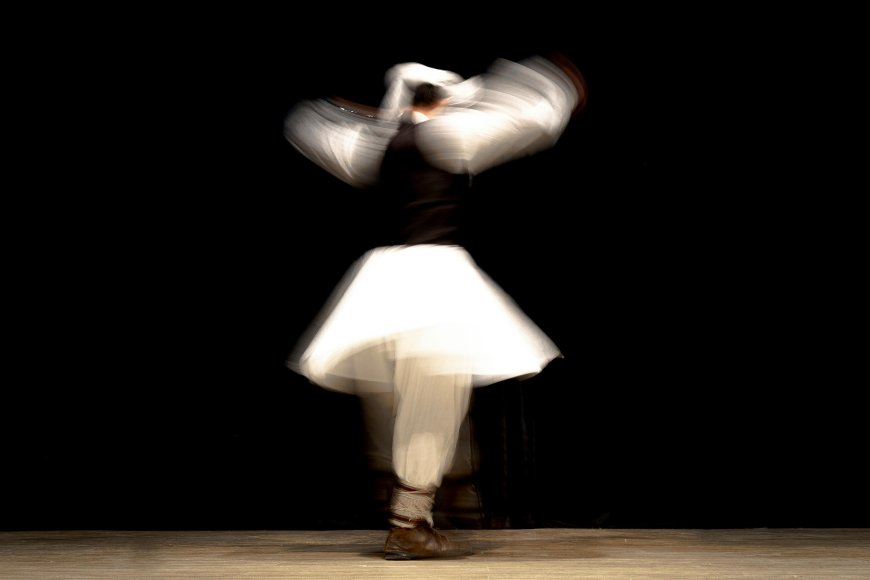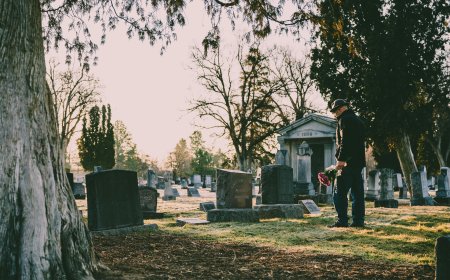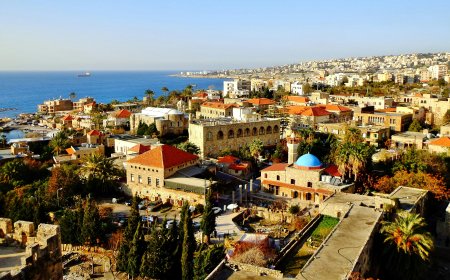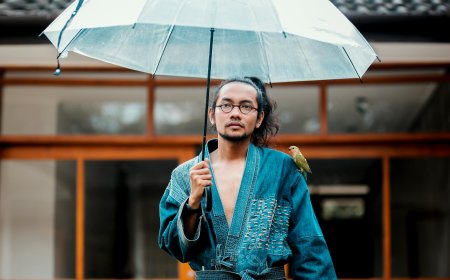The distinctive folk dances in different cultures
Folk dances are an integral part of various cultures around the world, serving as artistic expressions of people's heritage and identity. These dances vary in their details, styles, and rhythms, embodying the spirit of each community with elegance and vitality. Spanish flamenco dances, for instance, express the passion and depth of life, while Hawaiian hula dances are known for their serene and contemplative style. The beauty of folk dances extends beyond mere performance, transcending the boundaries of time and place to narrate profound stories about the history and traditions of peoples. This makes them a fundamental axis in the cultural interaction among diverse communities.

Folk dances are an integral part of various cultures around the world, serving as artistic expressions of people's heritage and identity. These dances vary in their details, styles, and rhythms, embodying the spirit of each community with elegance and vitality. Spanish flamenco dances, for instance, express the passion and depth of life, while Hawaiian hula dances are known for their serene and contemplative style. The beauty of folk dances extends beyond mere performance, transcending the boundaries of time and place to narrate profound stories about the history and traditions of peoples. This makes them a fundamental axis in the cultural interaction among diverse communities.
The distinctive folk dances in different cultures
Folk dances are an essential part of the cultural heritage of various peoples around the world, expressing traditions, customs, and values that unite members of the community in an exciting and inspiring shared experience. These dances vary greatly from one culture to another, influenced by geography, history, traditions, and local customs.
For instance, in African culture, folk dances are characterized by vibrant rhythms and dynamic movements that reflect the social and spiritual essence of African societies. Dances like "salsa" in Latin America and "mbaako" in West Africa are prominent examples of this genre, combining rhythmic movements with personal expression.
In Indian culture, folk dance is characterized by diversity and richness, with many styles such as "Bharatanatyam," "Kathak," and "Bihu," each featuring unique styles and artistic expression carrying deep cultural and religious meanings.
In East Asian culture, dance is an important part of local traditions and celebrations, known for its diversity and authenticity. For example, dances like "Bhangra" in India, "Taiko" in Japan, and "Dabke" in Palestine are among the prominent folk dances that express the cultural identity and national spirit of these cultures.
Overall, folk dances in different cultures are a source of national pride and expression of cultural identity, serving as an effective means of social communication and interaction among members of society. They carry profound meanings and reflect an ancient heritage that must be preserved and promoted for future generations.
The history of folk dances through the ages
The history of folk dances throughout the ages dates back to ancient times, where they were an integral part of human life and cultures. Since ancient times, humans have used dance as a means of expressing their feelings and communicating with others, as well as strengthening social bonds within the community.
In ancient times, folk dances played a significant role in religious rituals and social celebrations, used to express joy, sorrow, gratitude, and praise. For example, ancient Greek dances like "Zorba" and traditional Indian dances such as "Bharatanatyam" and "Kathak" are prominent examples of folk dances that have been practiced for thousands of years.
With the development of civilizations and cultural exchanges, folk dances were influenced by various factors such as migration, trade, and military invasions. In the Middle Ages, folk dances witnessed diversity and flourishing in different parts of the world, influenced by the religious and cultural traditions of different peoples.
With the onset of the modern era, folk dances underwent significant developments in styles and techniques, reflecting social and cultural transformations in societies. With the spread of modern communication and media, it became possible to transmit and exchange folk dances between different cultures more quickly and effectively.
In general, the history of folk dances throughout the ages reflects a continuous evolution of peoples' traditions and cultures, and a deep impact of the historical, social, and cultural developments that societies have undergone over time.
The charm of folk dances around the world
The allure of folk dances reflects a deep beauty and a vibrant spirit full of expression. Throughout the ages, folk dances have been an integral part of human life, serving as a means of communication and expression of various emotions and situations. Historically, folk dances can be traced back to different periods and diverse cultures, representing an evolution of human movement and cultural communication.
In ancient times, folk dances played a significant role in religious and social celebrations, used to mark agricultural seasons, religious festivals, and important social events. Over time, these dances evolved to become more complex and diverse, incorporating new elements and advanced techniques.
From the Middle Ages to the modern era, folk dances continued to thrive and evolve, serving as a means of expressing cultural identity and social belonging. These dances were passed down from generation to generation, evolving their styles and adding new touches that reflected changes in society and traditions.
In the modern era, folk dances have seen tremendous developments thanks to technology and modern communication methods, making it easy to watch and learn folk dances from around the world. These dances have been influenced by many cultures and traditions, adding new diversity and richness to them.
The charm of folk dances lies in their ability to communicate between people and express themselves uniquely and beautifully. They blend rhythmic and expressive movements with culture and history to create a stunning artistic experience that transcends time and place.
Folk dances as a mirror of local cultures
Folk dances serve as a mirror reflecting various aspects of local cultures, showcasing the values, traditions, and beliefs of the communities in which they originate. This mirror is evident in several aspects:
1. Artistic and creative expression: Folk dances express the creativity and artistic expression of peoples, with various forms reflecting the diversity of local cultures, whether in movements, melodies, or costumes.
2. History and traditions: Folk dances carry a deep heritage reflecting the history and evolution of societies, with some dances being linked to significant historical events or ancient traditions passed down through generations.
3. Expression of national identity: Folk dances are a means of expressing national identity and patriotism, with movements, music, and costumes carefully selected to convey the national spirit of the community.
4. Cultural communication and fusion: Folk dances contribute to enhancing communication and interaction between different cultures, as they may be influenced by traditions and cultures of others, creating an intriguing blend of local customs and original traditions.
5. Community and social belonging: Folk dances serve to strengthen social bonds within communities, with individuals participating in these dances as a means of entertainment and social interaction with one another.
In this way, folk dances act as a mirror reflecting multiple facets of local cultures and contribute to enriching and enhancing the cultural heritage of societies worldwide.
The evolution of folk dances in the modern era
In the modern era, folk dances have witnessed tremendous developments due to advancements in technology, global communication, and profound social and cultural changes. This evolution is evident in several aspects:
1. Technology and communication: Modern communication tools, such as the internet and social media, have made it easier to disseminate and exchange folk dances worldwide quickly and efficiently. Individuals can learn and practice folk dances by watching instructional videos online or sharing their performances on social media platforms.
2. Cross-cultural influences: In the modern era, folk dances are influenced by dance traditions and styles from various parts of the world. Individuals can draw inspiration from other cultures' dance styles and integrate them into their folk dance presentations.
3. Technological advancements in dance performances: Dance performances in the modern era have seen significant advancements in the use of modern techniques, such as lighting, visual effects, and sound, to enhance the audience's experience and increase the appeal of dance performances.
4. Diversity and innovation: The modern era witnesses significant momentum in the diversity and innovation in folk dances. Many dance groups and companies emerge presenting new dance styles and patterns, enriching the audience's experience and attracting more interest in folk dances.
5. Cultural and social influence: In the modern era, folk dances reflect the transformations and developments of societies, as well as social and cultural issues. Folk dances can become a means of expressing cultural identity and belonging, as well as conveying important social messages and issues.
An Analytical Study of Folk Dance Patterns
An analytical study of folk dance patterns is essential for understanding the diversity and evolution that this art form has undergone in the modern era. Folk dances vary greatly around the world, influenced by cultural, social, and historical factors in the societies where they originate. Therefore, understanding and analyzing folk dance patterns require a detailed study of many elements and variables, including:
1. Movements and techniques: Analyzing folk dances involves studying the movements and techniques used in each type of dance, including steps, transitions, and coordination between dancers. The complexity of these movements and the diversity in their use to express various themes and emotions are analyzed.
2. Music and rhythms: Music and rhythms play a significant role in shaping folk dance patterns, so the types of music used and their impact on dance movements and rhythms must be studied.
3. Costumes and decorations: Costumes and decorations are an important part of folk dance performances, reflecting local traditions and culture. Therefore, studying the influence of costumes and decorations on determining folk dance patterns and interpreting their symbols is crucial.
4. Social and cultural context: The shape and style of folk dances are influenced by the social and cultural context in which they arise. Therefore, analyzing folk dance patterns requires understanding the social and cultural conditions that affect them, including celebrations, religious events, and folk festivals.
5. Modern developments and global influences: In the modern era, the shape of folk dances is influenced by global developments and modern techniques, leading to the emergence of new patterns and different effects on traditional folk dances.
An analytical study of folk dance patterns requires a deep understanding of the many intertwined factors that make up this art form, shedding light on the details of movements, music, and culture that make each type of folk dance unique and distinctive in expressing local culture.
The folk spirit
The folk spirit represents the vital and spiritual essence of communities, vividly manifested in folk dances that express the heritage and identity of peoples. The folk spirit can be understood through several aspects:
1. Artistic and Emotional Expression: Folk dances serve as a means of expressing popular feelings and emotions in a distinctive artistic manner. They convey joy and sorrow, celebration and mourning, reflecting people's lives and their interaction with various events and situations.
2. Heritage and Cultural Identity: Folk dances are an integral part of the cultural heritage of societies, carrying stories and traditions that span across ages. These dances express the cultural identity of peoples and symbolize their identity and history.
3. Social Communication and Belonging: Folk dances enhance social bonds within communities, bringing people together to share in dancing and celebration. This activity serves as a means of communication and interaction among community members, fostering a sense of belonging and solidarity.
4. Traditions and Celebrations: Folk dances are deeply rooted in local traditions and celebrations, forming an integral part of wedding ceremonies, religious festivals, and cultural events. These dances constitute an important element in celebratory experiences and expressions of joy and happiness.
5. Diversity and Innovation: Folk dances are characterized by diversity and innovation, evolving over time and influenced by other cultures and social changes. These dances reflect the ability of people to adapt and innovate in the face of cultural and historical transformations.
Folk dances reflect the folk spirit and spirituality of communities, serving as a vital and distinctive element in expressing popular culture and identity, and contributing to enhancing communication and solidarity among community members.
Summary
Popular dances are an integral part of the cultural heritage of various cultures around the world, reflecting the diversity and richness of each society. Popular dances in different cultures are distinguished by their unique styles and rhythms, expressing stories, traditions, and customs that span through ages. From Irish folk dances to Spanish flamenco to Hawaiian hula, each popular dance carries deep meanings and serves as an expression of identity and the popular spirit of the culture it belongs to. Through these dances, we can understand the heritage, traditions, and values that distinguish each culture, promoting communication and mutual understanding among different cultures in our diverse world.
Sources
1. Latin Dances
- Article The Most Popular Latin Dances from LiveAbout provides an overview of popular Latin dance styles such as Salsa, Samba, and Tango.
- Video 10 Most Popular Latin Dance Styles on YouTube showcases a variety of famous Latin dances with examples of each style.
2. African Dances
- Article African Dance 10 Most Popular African Dance Styles on Answers Africa presents a diverse range of traditional African dances with explanations of each type.
- Article Traditional African Dance on Wikipedia provides extensive information about the history and types of traditional dances in Africa.
3. Indian Dances
- Article Indian Classical Dance on Wikipedia offers comprehensive information about Indian classical dance, such as Bharatanatyam and many other regional styles.
- Website Learn Indian Dance provides lessons and information about various Indian dance forms, including many popular styles.
What's Your Reaction?




















































































































































